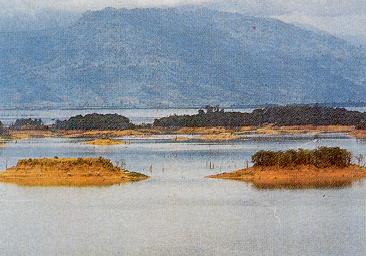Laos
An introduction to the geography, economy and people of Laos.
Laos Facts
Laos has a tropical monsoon climate, which is hot, humid and wet. She has distinct wet months from May to November and dry months from December to April. The capital city of Laos is Vientiane. Her land area is about 236800 kmē. And she is the only land-locked South East Asian country. Natural disasters occurring here include floods, droughts and blights. Most of Laos's land (about 54%) is forested. She has mostly rugged mountains with some plains and plateaus. Phou Bia is the highest point on Laos at 2817m tall. Major cities here include Luang Prabang and Champassak.
Laos was granted independence on the 19th of July 1949 from France. Laos is a Communist state. The Head of Government is Sisavat Keobouhphan who has three Deputy Prime ministers, Minister Boun-Nhang Vorachith, Choummali Saygnasone and Somsavat Lengsavad. The Council of Cabinet Ministers is appointed by the president and approved by the National Assembly. The Legislative branch cantains a National Assembly whose member are elected by popular vote to serve a five-year term and her Judicial branch contains of a Prople's Supreme Court whose president is elected by the National Assembly.
The government of Laos - one of the few remaining official communist states -
began decentralizing control and encouraging private enterprise in 1986. The
results, starting from an extremely low base, were striking - growth averaged
7% in 1988-96. Since mid-1996, however, reform efforts have slowed, and the
economy has suffered as a result. Because Laos depends heavily on its trade
with Thailand, it was further damaged by the regional financial crisis beginning
in 1997. From June 1997 to June 1999 the Lao kip (the Laotian currency) lost 87%,
and reached a crisis point in September 1999 when it fluctuated wildly, falling
from 3,500 kip to the dollar to 9,000 kip to the dollar in a matter of weeks.
Now that the currency has stabilized, however, the government seems content to
let the current situation persist, despite 140% inflation in 1999 and limited
foreign exchange reserves. A landlocked country with primitive infrastructure,
Laos has no railroads, a rudimentary road system, and limited external and
internal telecommunications. Electricity is available in only a few urban areas
even though the Nam Ngun Reservoir (below) has been built to produce hydroelectricity.
Subsistence agriculture accounts for half of GDP and provides 80% of total
employment. For the foreseeable future the economy will continue to depend on
aid from the IMF and other international sources. Japan is currently the largest
bilateral aid donor as aid from the former USSR/Eastern Europe has been cut
sharply. As in many developing countries, deforestation and soil erosion will
hamper efforts to attain a high rate of GDP growth.

The population of Laos is about 5,497,459 and the population growth rate is about 2.5%. Life expectancy is around 53 years at birth. Laos is mainly Lao Loum (68%) and Lao Theung (22%). Lao Soung and the Yao Mien make up 9% and the ethnic Vietnamese and Chinese make up the final 1%. Religions in Laos are Buddhism(official) 60% and animist and other (40%). Languages spoken in Laos are Lao (official) French, English and various ethnic languages. The literacy of the total population is 57%.
Ideally, this website should be viewed using Internet Explorer 5.